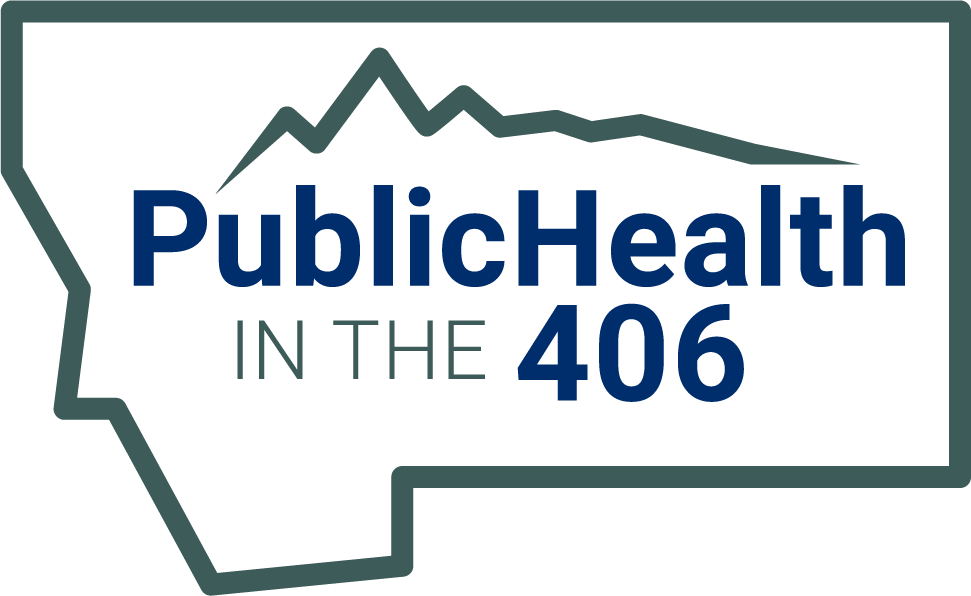HIV Frequently Asked Questions
AIDS stands for Acquired Immune Deficiency Syndrome.
An HIV-positive person receives an AIDS diagnosis after developing one of the CDC-defined AIDS indicator illnesses. An HIV-positive person can also receive an AIDS diagnosis on the basis of certain blood tests (CD4+ counts) and may not have experienced any serious illnesses. A positive HIV test does not mean that a person has AIDS. A diagnosis of AIDS is made by a physician according to the CDC AIDS Case Definition.
Over time, infection with HIV (Human Immunodeficiency Virus) can weaken the immune system to the point that the system has difficulty fighting off certain infections. These types of infections are known as opportunistic infections. Many of the infections that cause problems or that can be life-threatening for people with AIDS are usually controlled by a healthy immune system. The immune system of a person with AIDS has weakened to the point that medical intervention may be necessary to prevent or treat serious illness.
symptoms to know whether or not you are infected with HIV. Many people who are infected with HIV don't have any symptoms for many years.
Similarly, you can't rely on symptoms to identify a person with an AIDS diagnosis. The symptoms associated with AIDS are similar to the symptoms of many other diseases. AIDS is a diagnosis made by a doctor based on specific criteria established by the Centers for Disease Control and Prevention (CDC).
Many places provide testing for HIV infection. It is important to seek testing at a location that provides counseling about HIV and AIDS. Common locations include local health departments, private physicians, hospitals, and test sites specifically set up for HIV testing.
There is also testing which can be performed anonymously in the privacy of your own home. There are many home tests advertised through the internet, but only the Home Access Test has been approved by the FDA. The Home Access test kit can be found at most local pharmacies. The testing procedure involves pricking your finger with a special device, placing a drop of blood on a specially treated card, then mailing the card in for testing. You are given an identification number to use when you phone in for the test results-- 3 days or 2 weeks later, depending on the test kit purchased.
The CDC National AIDS Hotline can answer questions about testing and can refer you to testing sites in your area. The hotline numbers are 1-800-232-4636 (English and Spanish), or 1-800-232-6348 (TTY).
If you test positive, the sooner you take steps to protect your health, the better. Early medical treatment, a healthy lifestyle and a positive attitude can help you stay well. Prompt medical care may delay the onset of AIDS and prevent some life-threatening conditions. It is important to know that a positive HIV test should always be confirmed, to be sure that it is a true positive. If your test result is positive, there are a number of important steps you can take immediately to protect your health:
- See a doctor, even if you don't feel sick. Try to find a doctor who has experience treating HIV. There are now many new drugs to treat HIV infection. There are important tests, immunizations and drug treatments that can help you maintain good health. It is never too early to start thinking about treatment possibilities.
- Have a tuberculosis (TB) test done. You may be infected with TB and not know it. Undetected TB can cause serious illness. TB can be treated successfully if detected early.
- Recreational drugs, alcoholic beverages and smoking can weaken your immune system. There are programs available to help you stop.
- Consider joining a support group for people with HIV infection or finding out about other resources available in your area, such as HIV/AIDS-knowledgeable counselors for one on one therapy. There are also many newsletters available for people living with HIV and AIDS.
- There is much you can do to stay healthy. Learning as much as you can is a step in the right direction. Local and/or national resources may be available. Many HIV/AIDS organizations provide services free or on a sliding scale, based on ability to pay.
- Call the CDC National AIDS Hotline for more information and referrals at 1-800-232-4636 (English and Spanish), or 1-800-232-6348 (TTY).
The CDC National AIDS Hotline can offer practical information on maintaining health and general information about a wide variety of treatments, including antiretrovirals and prophylaxis for opportunistic infections. The hotline numbers are 1-800-232-4636 (English and Spanish), or 1-800-232-6348 (TTY). The National AIDS Hotline can also provide referrals to national treatment hotlines, local AIDS Service Organizations and HIV/AIDS-knowledgeable physicians.
Detailed information on specific treatments is available from the HIV/AIDS Treatment Information Service (ATIS) at 1-800-448-0440. Information on enrolling in clinical trials can be obtained from the AIDS Clinical Trials Information Service (ACTIS) at 1-800-874-2572 (English and Spanish) and 1-800-243-7012 (TTY).
The U.S. blood supply is among the safest in the world. Nearly all people infected with HIV through blood transfusions received those transfusions before 1985, the year it became possible to test donated blood for HIV.
The Public Health Service has recommended a multifaceted approach to blood safety in the United States that includes stringent donor selection practices and the use of screening tests. Blood donations in the United States have been screened for antibody to HIV-1 since March 1985 and HIV-2 since June 1992. Blood and blood products that test positive for HIV are safely discarded and are not used for transfusion
An estimated one in 450,000 to one in 660,000 donations per year are infectious for HIV but are not detected by current antibody screening tests. In August of 1995 the FDA recommended that all donated blood and plasma also be screened for HIV-1 p24 antigen. Donor screening for p24 antigen is expected to reduce the number of otherwise undetected infectious donations by approximately 25 percent per year. The improvement of processing methods for blood products has also reduced the number of infections resulting in the use of these products. Currently the risk of infection with HIV in the United States through receiving a blood transfusion or through the use of blood products is extremely rare and has become progressively more infrequent, even in areas with high HIV prevalence rates.
Scientists have different theories as to the origin of HIV but none have been proven. We now know that the virus has existed in the United States, Haiti and Africa since at least 1977-1978. In 1979 rare types of pneumonia, cancer and other illnesses were being reported by doctors in Los Angeles and New York. The common thread was that these were conditions not usually found in persons with healthy immune systems.
In 1982 the Centers for Disease Control and Prevention (CDC) officially named the condition AIDS (Acquired Immune Deficiency Syndrome). In 1984 the virus responsible for weakening the immune system was identified as HIV (Human Immunodeficiency Virus).
What is currently known is that there is some risk associated with performing oral sex without protection. Cumulative evidence indicates that the risk is less than that of unprotected anal or vaginal sex.
Currently, risk reduction options when performing oral sex on a man include the use of latex condoms, but also include withdrawal before ejaculation without a condom (avoiding semen in the mouth) and/or refraining from this activity when cuts or sores are present in the mouth.
When performing oral sex on a woman moisture barriers such as a dental dam, a cut-open and flattened condom or household plastic wrap can reduce the risk of exposure to vaginal secretions.
The risk from receiving oral sex, for both a man and a woman, is considered to be very low, and there have been no documented cases of transmission through receiving oral sex.
If you have other questions about oral sex and HIV, call the CDC National AIDS Hotline at 1-800-232-4636 (English and Spanish), or 1-800-232-6348 (TTY).
Having a sexually transmitted disease (STD) can increase a person's risk of becoming infected with HIV, whether or not that STD causes lesions or breaks in the skin. If the STD infection causes irritation of the skin, breaks or sores may make it easier for HIV to enter the body during sexual contact. Even an STD that causes no breaks or sores can stimulate an immune response in the genital area that can make HIV transmission more likely.
No. HIV is not transmitted by day to day contact in the home, the workplace, schools, or social settings. HIV is not transmitted through shaking hands, hugging or a casual kiss. You cannot become infected from a toilet seat, a drinking fountain, a doorknob, dishes, drinking glasses, food, or pets.
HIV is a fragile virus that does not live long outside the body. HIV is not an airborne or foodborne virus. HIV is present in the blood, semen or vaginal secretions of an infected person and can be transmitted through unprotected vaginal, oral or anal sex or through sharing injection drug needles.
For injecting drug users who can not stop using drugs, the best way to minimize the risk of transmission of HIV and other diseases is to never re-use or "share" syringes, water or drug preparation equipment. Keep in mind the following points:
- Use only syringes obtained from a safe, reliable source (a pharmacy or syringe exchange).
- Use a new, sterile syringe to prepare drugs.
- If possible, use sterile water to prepare drugs; otherwise use clean water from a reliable source (fresh tap water).
- Use a new or disinfected container ("cooker") and a new filter ("cotton") to prepare drugs.
- Clean the injection site prior to injection with a new alcohol swab.
- Safely dispose of syringes after one use.
The availability of new, sterile syringes varies, depending on state and local regulations regarding the sale and possession of syringes, and on other factors, such as the existence of syringe exchange programs sponsored by local HIV prevention organizations.
If new, sterile syringes and other drug preparation equipment are not available, then previously used equipment should be disinfected with bleach using the following procedures. Disinfecting previously used needles and syringes with bleach can reduce the risk of HIV transmission but is not as safe as always using a new, sterile needle and syringe.
- Flush the needle and syringe several times with clean water, being sure the needle is completely submersed.
- Then, fill the syringe to the top several times with full-strength liquid chlorine bleach. Filling the syringe with bleach at least 3 times and allowing the bleach to remain in the syringe for at least 30 seconds may increase the likelihood that HIV will be inactivated.
- To rinse, flush the needle and syringe again several times with clean water. Do not reuse the pre-bleach wash water for this step.
These procedures should be performed twice: once immediately after use and again just before reuse. Shaking and tapping the syringe are recommended when the syringe is filled with water and bleach. This should improve the effectiveness of all steps.




